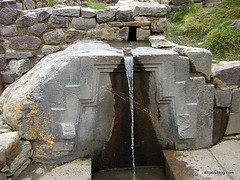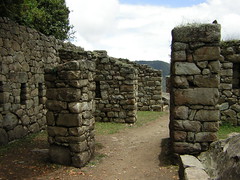Wari city unveiled in Cerro Pátapo – missing link discovered
In the less than two weeks since work began amazing discoveries have been made at the Cerro Pátapo archaeological site, until now little more than a pile of rocks. This huge site that stretches over 5km is now revealing its importance – it is a missing link between the declining Moche culture and the newly arrived Wari.
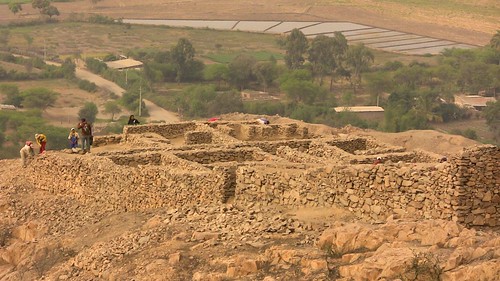
Ruins of Cerro Pátapo – Andina/Silvia Depaz
The bleak story of this site just 22km outside Chiclayo began to change on the 27th of November, when work lead by the Unidad Ejecutora Naylamp began with the aim of rescuing and restoring it. With the help of 45 local workers the project began to bear fruit immediately.
On removing the rubble, the remains of an impressive fort, houses, schools, solar observatories and even a monastery and courtroom were discovered.
The crowning moment for the workers, led by archaeologist César Soriano Ríos, occured some two kilometres from the centre of the citadel, when a huge ceramic pot was discovered containing the trousseau of a young woman with an age of between 17 and 21 years.
This is hugely important because from the items found inside we can learn how noble women dressed. Found inside were clothes made from local cotton including blouses and short dresses, as well as a large number of other personal items. The ceramic pot was found in a stone building that was 2 metres in height and some distance from the centre of the ancient city – this area is yet to be completely studied.
Court House
As workers moved tonnes of rubble that covered the citadel there were a number of other surprises to be had, such as two geoglyphs. One of them of a pelican-like mythical bird and the other of an ocean wave.
However, what most caught the attention of the archaeologist from Trujillo was the emergence of residential areas of the lords who ruled from 750AD until the year 1470, as well as areas where their court judged the prisoners.
The team was able to excavate the entire court area, including prison cells and the main court room where throwns were used for the judges to sit on. Those sentenced to death were lead to an area with a steep drop off the top of the hill the complex is located on. Bones have been found at the bottom.
Missing Link
According to the hypothesis of archaeologist César Soriano, the site is unique because of the period of time it was built and occupied – during the period immediately after the decline of the Moche and during the arrival of the Wari (Huari) in the 700s AD.
“We are faced with the evidence of the Wari culture, which would be a cultural continuity, after the Moche. We found some evidence that allows us to concluded that it is a fairly long period. It is an empire that existed 250 years before the emergence of the Incas, who spread across Peru bringing with them their culture and religion, giving people a new cultural direction in which to develop”, said the researcher.
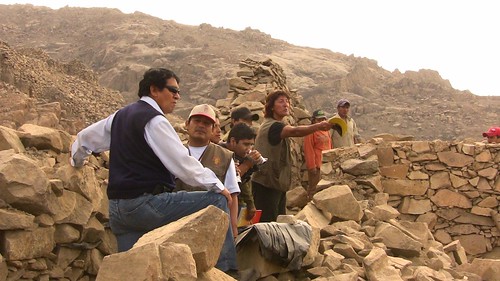
Ruins of Cerro Pátapo – Andina/Silvia Depaz
“After the decline of the Moche followed the old Wari empire that flourished in this part of northern Peru building a series of constructions and road networks with which they dominated what is now the valley of Chancay-Lambayeque. They came with different technology, they taught locals to build with stone and to make stone rather than their typical pyramids of adobe, which are still preserved in different areas of the region”, he revealed.
With his 25 years of experience, Soriano knew he was facing a great discovery when his team began to reveal remnants of Wari pottery – then to uncover buildings of classic Wari design, previously wrongly identified as Inca.
Without a licence
The director of the corrupt, but mostly incompetent and bureaucratic National Institute of Culture (INC) César Medoza Canto stated that the Unidad Ejecutora Naylamp is operating without authorisation.
“They have not been issued with any document by us, and I think this is a case of an excess of volunteerism that would be contrary to existing laws”, he explained.
The site is registered with the INC as a protected zone of national heritage, but the under-funded and often uninterested governmental institution often does nothing to actually conserve their listed sites. Most deteriorate day after day, and organisations and individuals find it difficult to apply for licenses to carry out studies because those who work for the INC dislike having to do their jobs and may not even read the application before rejecting it.
The director of the Unidad Ejecutora Naylamp, Celso Sial Távara explained that they were forced to intervene following a series of complaints from residents, who reported that several sectors of the complex were being destroyed. The INC had done nothing to protect the site from tomb robbers nor conserve any part of it.
“In reality we have not done any kind of ‘excavation’, just cleaning and protection work, carried out by a professional archaeologist with extensive experience”, he said.
Tags: Archaeology, cerro patapo, chiclayo, huari, INC, lambayeque, moche, ruins, unidad ejecutora naylamp



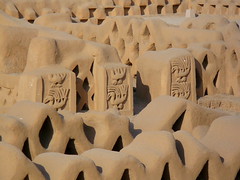



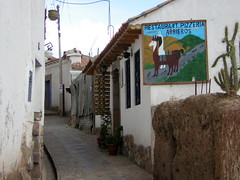
![How to become an Olympian [Featured]](http://farm3.static.flickr.com/2696/4356910596_7d5da589e3_m.jpg)
